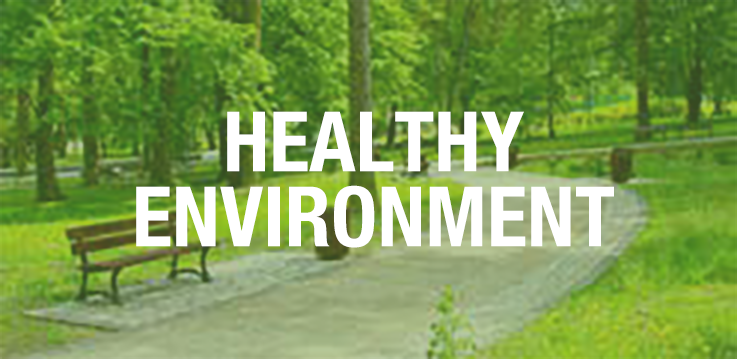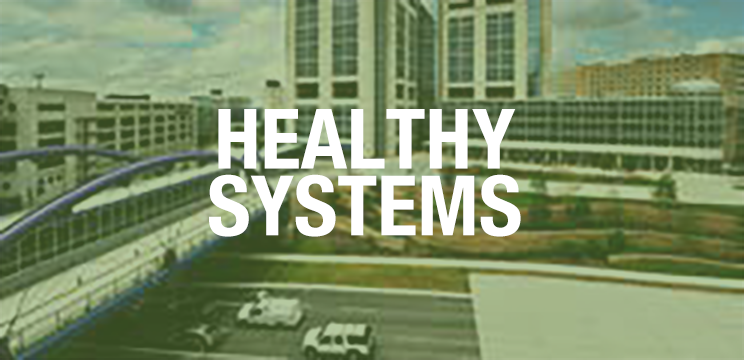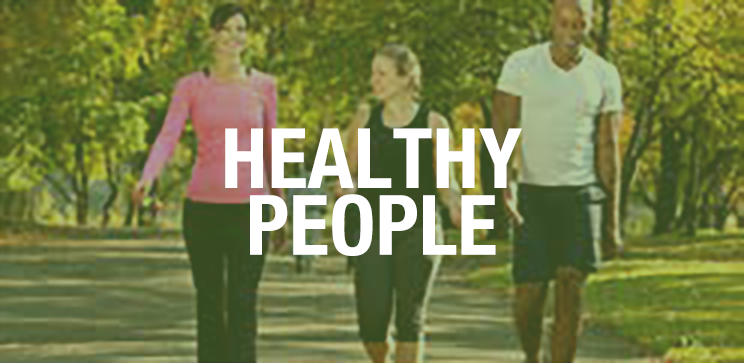Transforming Lives and Landscapes
With less than 7% tree canopy, the impacts of the Southwestern Medical District’s amplified heat on human health directly affects the costs and challenges of the three world-class hospitals in the Southwestern Medical District.
Despite projected growth and the renowned medical status, there remains a significant amount of untapped potential to improve the overall health of the environment, infrastructure and people within the SWMD.
The Southwestern Medical District in Dallas, Texas is home to world-renowned hospitals and is a place of innovation, hope, and healing. Step outside of these remarkable institutions and into the streetscape and a less vibrant and healthy story emerges…
The Texas Trees Foundation is rewriting the story by leading a visionary, therapeutic landscape redesign to transform the antiquated Harry Hines corridor from Treadway Street to Lucas Drive into a vibrant, connected, and safe multi-modal linear parkway with an 8-acre central park.
Through a lens of robust engagement, the holistic restructuring will focus on evidence-based design that enhances the environment, uplifts adjoining neighborhoods and businesses, spurs economic development, and nurtures the body, mind, and spirit of the over 3 million individuals who experience the district annually.
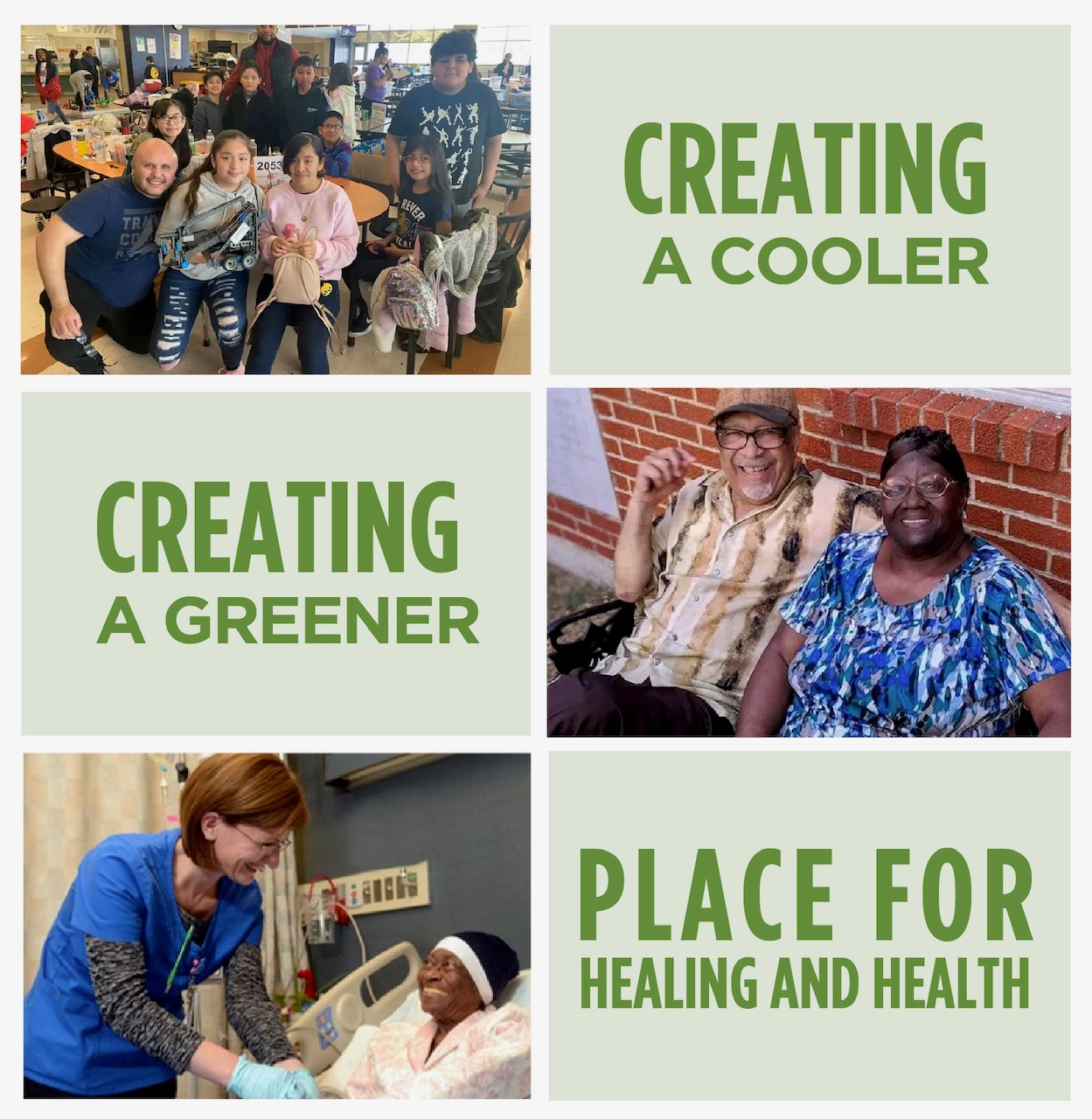
A National Dilemma. A Local Solution.
Aging Infrastructure
On a national level, street infrastructure is exhausted and failing. The American Society of Civil Engineers estimates a $2.6 trillion investment is needed to bring America’s infrastructure up to an acceptable grade. According to the American Society for Civil Engineers’ 2021 Report Card for America’s Infrastructure, 47% of roads in Texas are in poor or fair condition. There is a $15 billion annual gap in state funding and resources through 2040 for the new and improved roadway infrastructure needed to keep up with Texas’ projected growth.
The SWMD’s antiquated infrastructure and public rights-of-way are due for significant upgrades.
This need for updated infrastructure provides the opportunity to reimagine the function of streets and consider how the Medical District community can be best served by improved public infrastructure that accommodates all transportation modes and users.
Urban Heat Island Effect
According to Dr. Brian Stone, Professor, Georgia Institute of Technology, Dallas is the third most rapidly growing urban heat island in the country, behind Louisville and Phoenix.
Findings from the 2015 State of the Dallas Urban Forest Report and the 2017 Urban Heat Island Management Study, prepared by Texas Trees Foundation, determined that the SWMD is located within the largest urban heat island in Dallas and is one of the hottest areas of the city. The Medical District possesses a mere 7% tree canopy cover and is located near a large expanse of roadway and other industrial infrastructure such as I-35, Downtown, and Dallas Love Field Airport.
With temperatures being up to 15 degrees F° warmer in urban environments compared to surrounding, rural landscapes, people frequenting the Medical District experience higher temperatures and increased thermal discomfort due to the urban heat island effect.
Nature Deficit Disorder
As populations become more urbanized, people become increasingly disconnected with the natural environment. Humans' disconnect from nature has been associated with mental health and wellness issues such as nature deficit disorder. According to the World Health Organization, mental health disorders constitute 10% of the global burden of disease.
Dallas is no stranger to mental health concerns or a disconnect with the natural environment.
Dallas is the 9th largest city in the country and the DFW region experienced the largest population growth in the country last year. Impervious surfaces are replacing natural areas as development accelerates. Further, when self-reporting their mental health on a recent survey, twenty percent of Dallas County residents reported “not good”.
Research agrees that time in nature has many physiological benefits, but it is Roger Ulrich’s 1984 study, “View Through a Window May Influence Recovery from Surgery”, that is especially significant to the context of this project. One of the first studies on biophilia’s impact on human health, Ulrich found that patients with views of natural areas had lower recovery times than those whose views were of a brick wall.
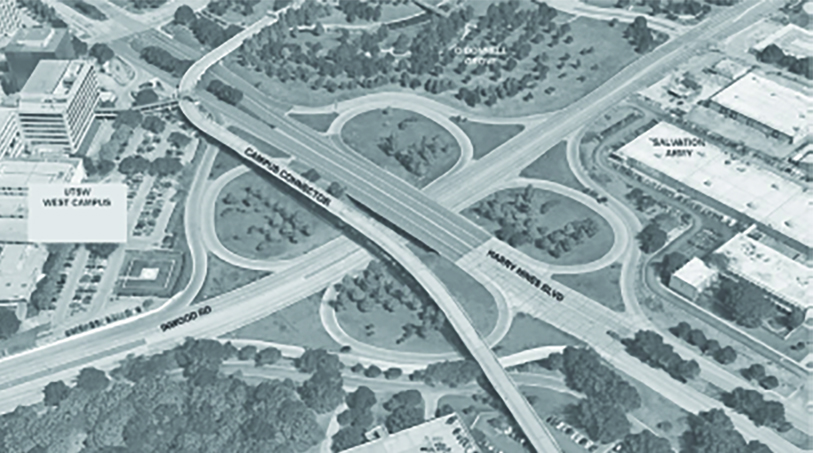
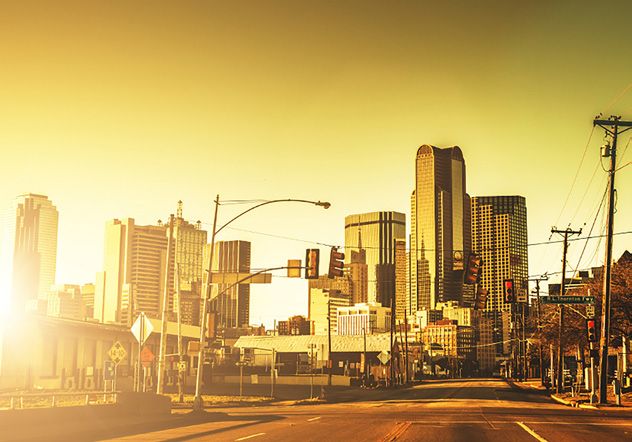

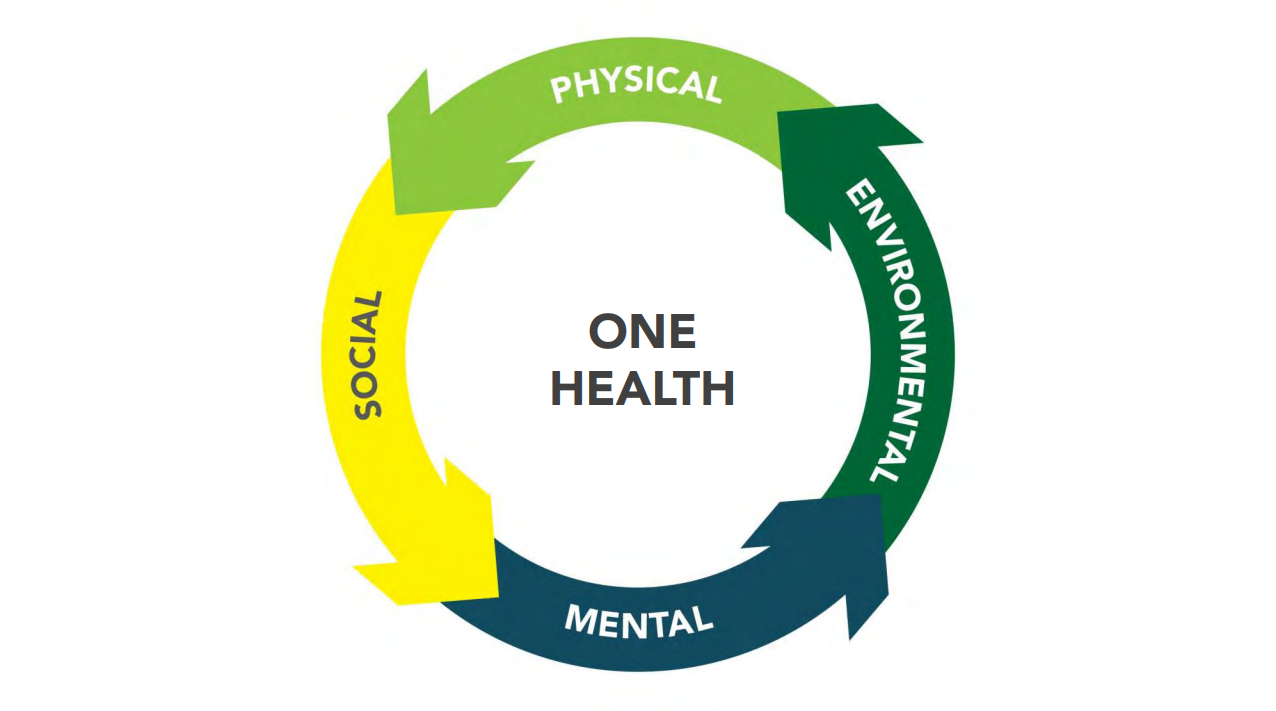
An Approach with Nature in Mind
The EMERGING COMMUNITY VISION imagines Harry Hines as a safe and vibrant street for people who walk, bike, take transit, and drive. It is well-connected to adjoining hospitals, neighborhoods, and key destinations. The redesigned street calms traffic while maintaining emergency access. New streetscape amenities improve physical, social, and mental health while creating an iconic, people-friendly street that meaningfully integrates the natural environment.
FINDING BALANCE - The SWMD team has developed five project pillars in collaboration with our partners in the Southwestern Medical District to ensure alignment with the District’s ongoing needs and growth. These pillars underscore the shared needs and opportunities in the outdoor landscape of the Southwestern Medical District and serve as a metric that guides the entirety of the Green Spine and Green Park project, from design to implementation.
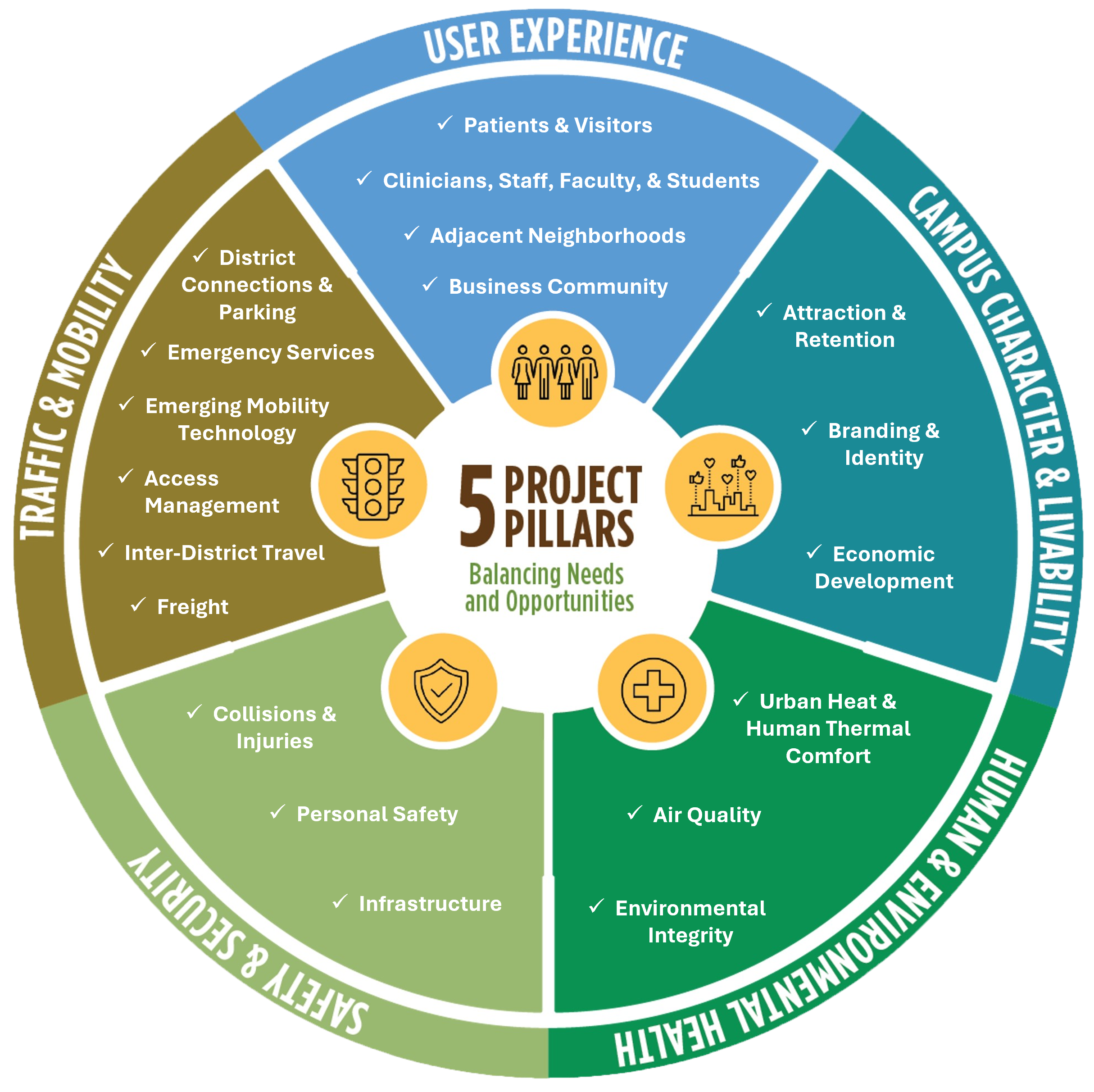
Healthy environment metrics set benchmarks to measure the proposed framework’s success in achieving the SWMD’s overall ecological health. This includes strategies to improve air quality, boost overall plant diversity and presence of urban habitat, reduce heat island effect, and manage stormwater.
Healthy system metrics set benchmarks to measure the proposed framework’s success in achieving efficient systems and connections. This includes strategies to support economic development, improve safety, improve overall connectivity, and utilize modern technology to minimize energy usage.
Healthy people metrics set benchmarks to measure the proposed framework’s success in improving the health of daily visitors and residents. Proposed strategies focus on improving the pedestrian experience in order to promote walking, outdoor recreation and peace of mind.
MEASURABLE IMPACT AND STRATEGY
- Mitigate heat island effect
- Increase tree diversity
- Improve overall air quality and reduce carbon footprint
- Protect, enhance, and create urban habitat to maximize wildlife populations
- Filter and treat stormwater
- Build on economic development opportunities
- Utilize smart technologies
- Improve access, connectivity and circulation for multimodal connections throughout and beyond the district
- Minimize overall energy usage along streets
- Increase human comfort
- Improve user health
- Define the SWMD as a destination
- Express the SWMD’s history
- Enhance temporal qualities
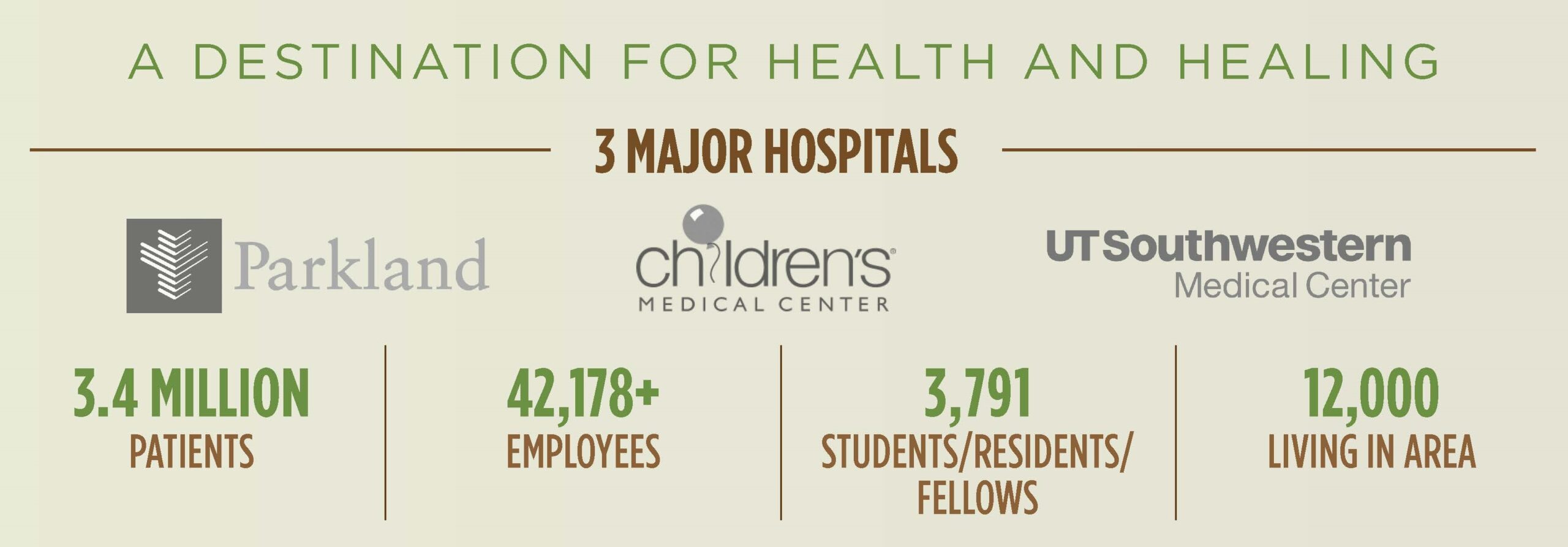
Donate
Please consider donating to support a reimagined Southwestern Medical District. Your contributions will go toward funding a more holistic green campus along the Harry Hines Corridor.
News
Stay up to date with the SWMD Transformation by signing up to receive our quarterly newsletter and project updates.
Resources
Take a 360° Virtual Platform Tour of our work in the District and browse our many reports and studies about urban heat and forestry in North Texas.

